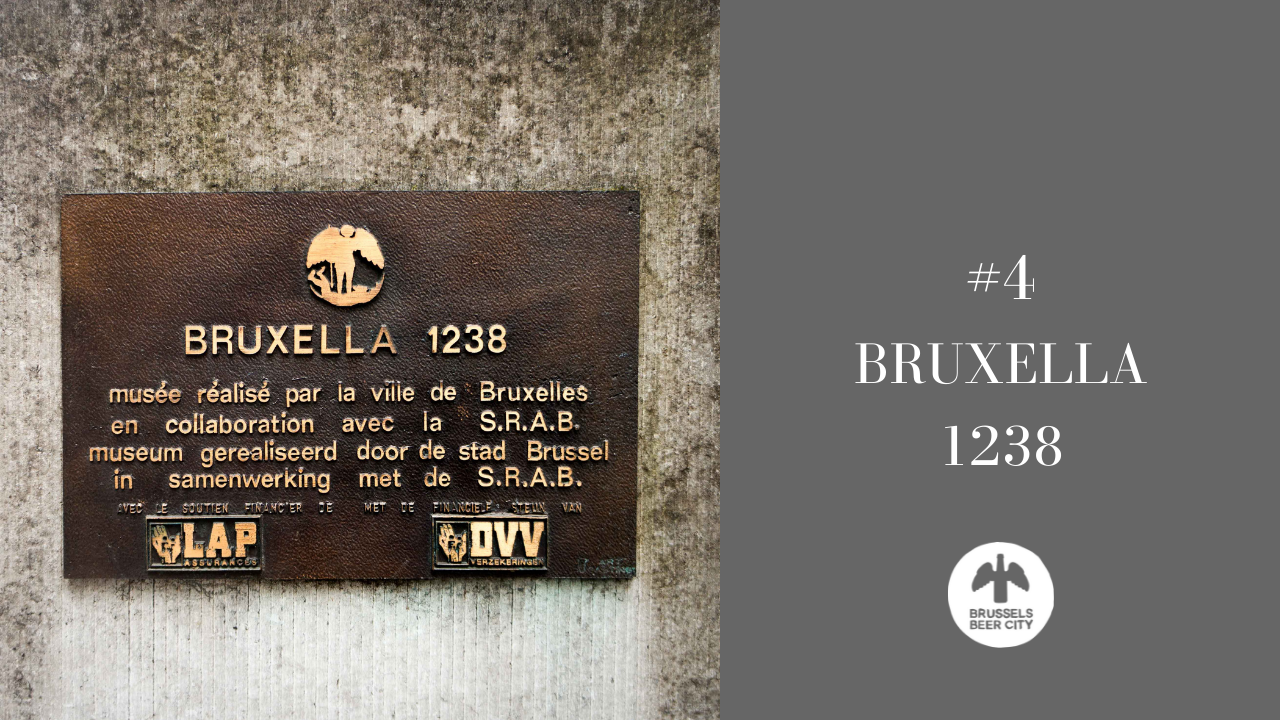A History of Brussels Beer in 50 Objects // #4 Bruxella 1238
Find out more about Brussels Beer City’s new weekly series, “A History Of Brussels Beer In 50 Objects” here.
Object #4 - Bruxella 1238
Rue de la Bourse 8, 1000 Brussels
13th century
City Life
John - Duke of Brabant, The Victorious, first of his name - died on May 3, 1294 following a shemozzle with a minor nobleman during a wedding in northern France. John - or Jan, or Jan Primus - was born in Leuven and succeeded his father as Duke in 1267. In shifting his residence from his birthplace to Brussels’ Coudenburg palace, Jan Primus titled the axis of power away from the former and accelerated the latter’s rise as Brabant’s pre-eminent city. His burial in the graveyard of a cloister next to the Zenne river cemented Brussels’ rise. What remains of his tomb now forms part of one of the city’s less-heralded museums, Bruxella 1238.
So far, so minor medieval chronicle. But this particular Low Countries cove has an outsized reputation in Brussels brewing history. Because Jan Primus is better known as Gambrinus - King of Beer, patron of brewers, and mythical Germanic folk hero of beer drinkers. A popular figure in his own time, the 1911 Encyclopædia Britannica called Jan Primus “a perfect model of a feudal prince….brave, adventurous, excelling in every form of active exercise, fond of display, generous in temper.”
He had a reputation for rousing military calls-to-arms while straddling beer casks, and “Hertog Jan” liked a drink, celebrating his triumph at the battle of Woeringen with a beer-drenched victory party. Brussels’ 13th century brewers’ guild honoured their political patron by installing an effigy of the duke in their meeting rooms. And Jan Primus is only, after all, a linguistic bastardisation or two from Gambrinus.
There are pretenders to his boozy throne. John “The Fearless”, a Burgundian duke and Count of Flanders, claimed to have introduced hops to brewing, and in the 15th century established an Order of the Hops. Then there’s Gambrinus’ 16th century origins as mythical German king Gambrivius who learned brewing secrets from Egyptian deities. Or the 19th century story of a Cambrai glassblower who sold his soul to the devil to brew beer. But even the Germans accepted Gambrinus’ Low Countries origins:
Gambrinus in leben werd ich genannt
Ein König in Flandern und Brabant
Aus Gersten hab ich malz gemacht
Und das bierbrauen daraus erdacht
“Gambrinus in life I am called
A king in Flanders and Brabant
I made malt from barley
And created beer brewing from it”
Jan Primus’ bones have long disappeared from his riverside grave, the original monastery site having been destroyed in the paroxysms of iconoclastic fervour that gripped 16th century Brussels. The remains of the 13th century monastery, and Jan Primus’ purported grave were eventually rediscovered during an archeological dig in 1988, alongside the foundations of Brussels 19th century Brussels’ Stock exchange. As Bruxella 1238, they will be incorporated into the as-yet-unfinished Belgian Beer World visitor experience inside the stock exchange. Jan’s bust still adorns a facade on Brussels’ Grand Place, and continuing the veneration of their forebears in Brussels’ medieval brewers guild, Belgium’s Knights of the Brewer’s Paddle toast the King of Beers each spring with an annual Feast of King Gambrinus.













